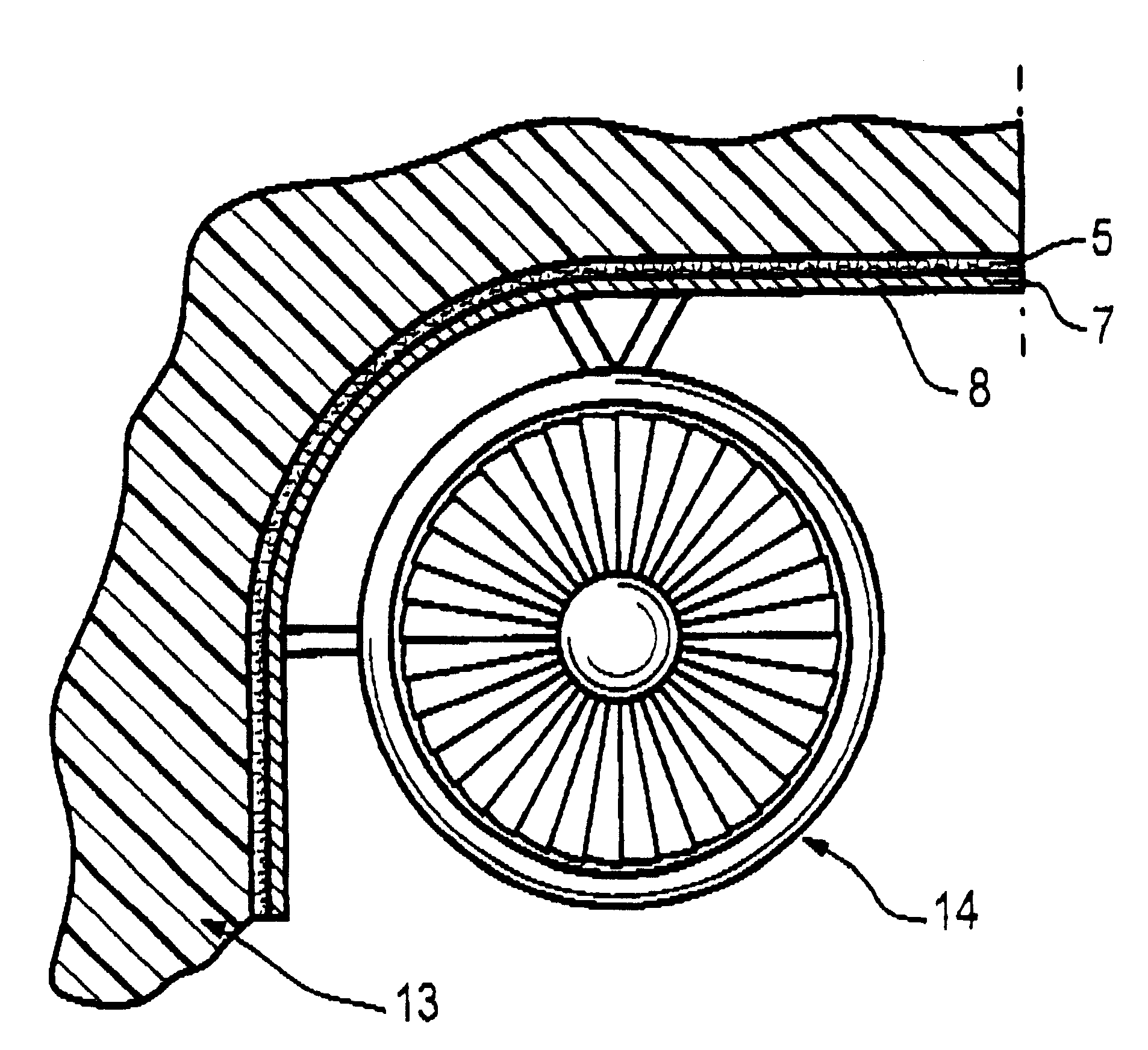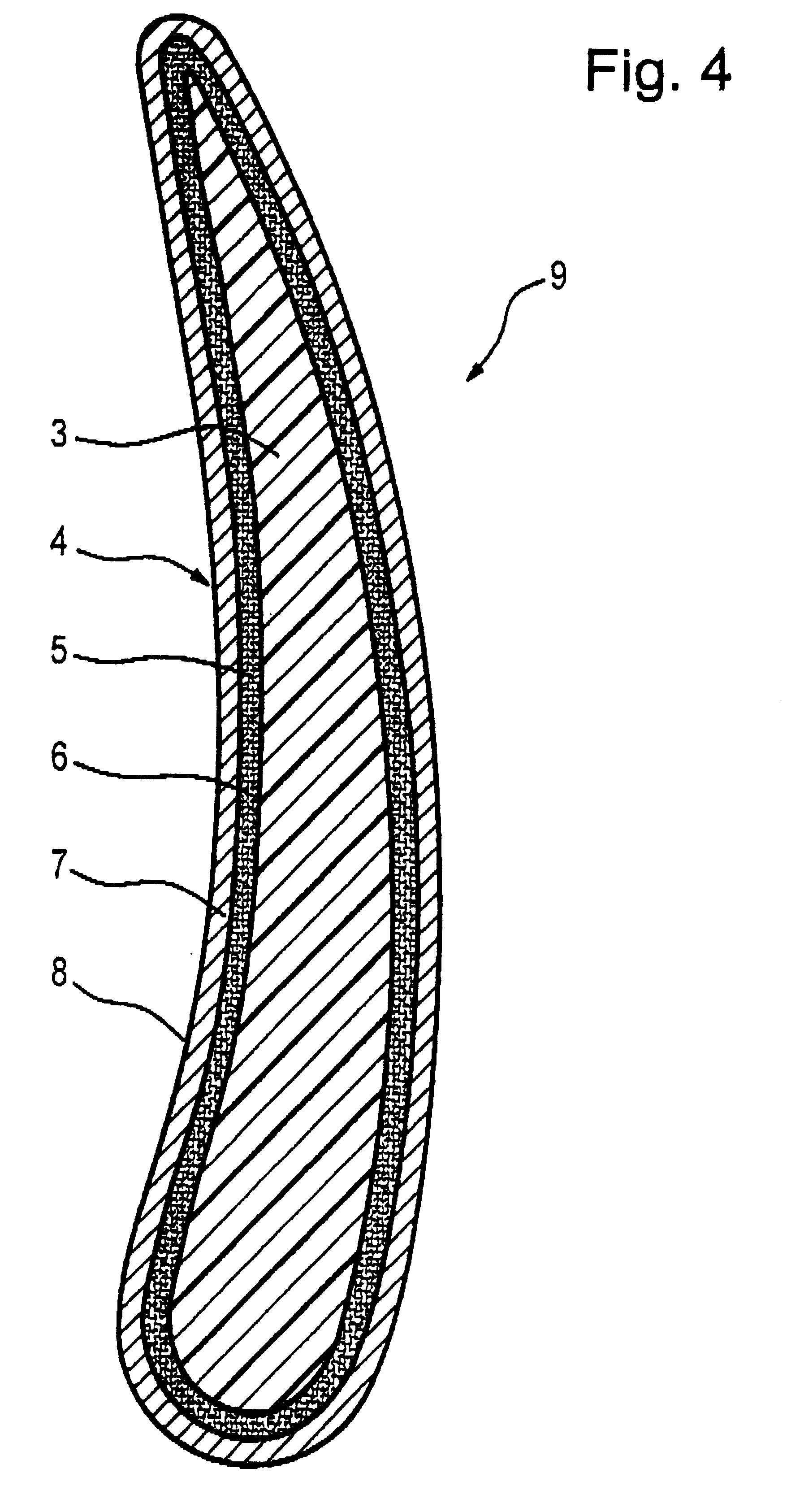Layer structure including metallic cover layer and fiber-reinforced composite substrate, and a method of making the same
a fiber-reinforced composite and metallic cover technology, applied in the direction of film/foil adhesives, synthetic resin layered products, transportation and packaging, etc., can solve the problems of insufficient adhesion ability, inability to provide adequate adhesion, and inability to meet the requirements of the substrate,
- Summary
- Abstract
- Description
- Claims
- Application Information
AI Technical Summary
Benefits of technology
Problems solved by technology
Method used
Image
Examples
Embodiment Construction
FIG. 1 shows an example embodiment of a layer structure 1 that includes a cover layer 4 arranged on a substrate 2. The substrate 2 essentially consists of a layer of fiber-reinforced synthetic material 3. The cover layer 4 comprises an interface layer 5 of metallic fibers and / or threads 6 adjacent to and bonded to the underlying substrate layer of fiber-reinforced synthetic material 3. The cover layer 4 further comprises a metal sheet 7 forming the outer surface or outer skin 8 of the layer structure 1. The metallic fibers and / or threads 6 and the metal sheet 7 consist of the same metallic material.
A first step in manufacturing the layer structure 1 involves sintering the threads and / or fibers 6 to the metal sheet 7 at a temperature of about 10.degree. C. below the melting temperature of their metallic material, so as to bond the materials together to form the cover layer 4. The manufacturing method next involves bonding the cover layer 4 with the substrate 2, as discussed below.
The...
PUM
| Property | Measurement | Unit |
|---|---|---|
| melting temperature | aaaaa | aaaaa |
| length | aaaaa | aaaaa |
| aspect ratio | aaaaa | aaaaa |
Abstract
Description
Claims
Application Information
 Login to View More
Login to View More - R&D
- Intellectual Property
- Life Sciences
- Materials
- Tech Scout
- Unparalleled Data Quality
- Higher Quality Content
- 60% Fewer Hallucinations
Browse by: Latest US Patents, China's latest patents, Technical Efficacy Thesaurus, Application Domain, Technology Topic, Popular Technical Reports.
© 2025 PatSnap. All rights reserved.Legal|Privacy policy|Modern Slavery Act Transparency Statement|Sitemap|About US| Contact US: help@patsnap.com



